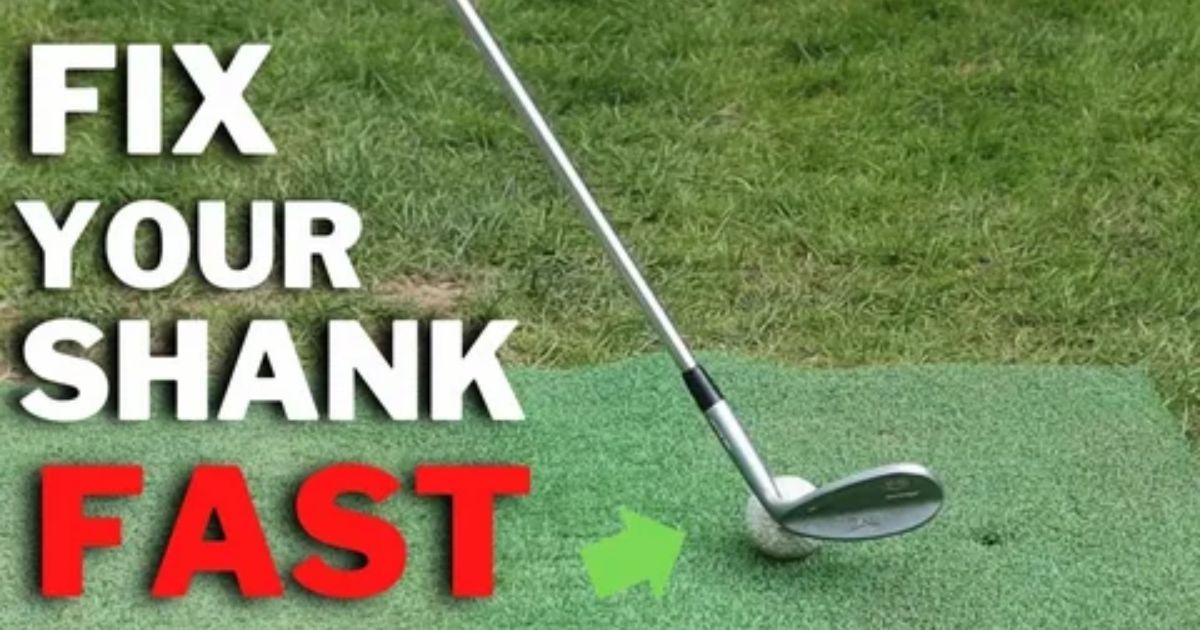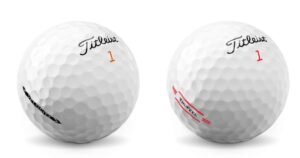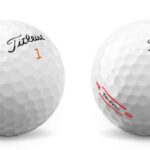Shanking the golf ball happens when you hit it off the club’s hosel instead of the clubface. It leads to an unpredictable and usually errant shot. This mistake often results in the ball going in an unintended direction, causing frustration for the golfer. To improve, golfers focus on proper swing mechanics and contact with the centre of the clubface.
Ever find yourself on the golf course wondering, “Why do you shank the golf ball?” It’s a common dilemma that can leave even seasoned golfers scratching their heads. The elusive answer lies in the nuances of your swing and club contact. Let’s unravel the mystery behind why you might be shanking the ball and discover the keys to a smoother, more accurate golf game.
Why Do You Shank The Golf Ball” explores the common golfing woe of shanking and seeks to uncover the reasons behind this frustrating phenomenon. Whether you’re a beginner or an experienced golfer, understanding the root causes behind shanking can lead to significant improvements in your game.
What Causes A Shank In Golf?
Curious about what causes a shank in golf? A shank occurs when the ball is unintentionally struck from the club’s hosel instead of the clubface. It’s a common hiccup that often results in wayward shots and perplexed golfers. Understanding the factors contributing to a shank is key to rectifying your swing and improving your overall golfing experience.
The primary culprits behind a shank involve misalignment, poor weight distribution, and an off-centre strike. Even experienced golfers can fall victim to this frustrating misstep. By unravelling the mysteries of why a shank happens, you can take proactive steps to refine your technique and minimize the chances of sending your golf ball on an unintended trajectory.
Distance from the Golf Ball at Address
- The distance from the golf ball at address is a critical aspect of a golfer’s setup.
- It refers to the space between the golfer and the ball as they stand ready to take a shot.
- Proper distance ensures an effective swing plane and helps in achieving the desired impact position.
Weight On Feet Not Neutral
- The distribution of weight on the feet during a golf swing significantly influences the shot outcome.
- Having weight unevenly distributed, not in a neutral position, can lead to balance issues and affect the swing’s consistency.
- Golfers strive for a balanced weight distribution to promote a stable and controlled swing motion.
Swing Path
- The swing path describes the direction the clubhead travels during a golf swing.
- A correct swing path is crucial for hitting the ball consistently and accurately.
- Golfers work on maintaining an optimal swing path, usually aiming for a shallow angle on the backswing and a complementary angle on the downswing for a more efficient and effective shot.
Why Do I Shank My Irons?

Ever wonder, Why do I shank my irons? It’s a question that plagues many golfers. The answer lies in the dynamics of your swing and club impact. When you shank your irons, it often results from an improper connection between the clubface and the ball, leading to wayward shots.
One key factor is the positioning of the clubface at impact. If it veers too close to the club’s hosel, you’re likely to shank the ball. Another culprit could be an over-the-top swing, causing the club to come down on an out-to-in path. By addressing these aspects and refining your swing mechanics, you can mitigate the tendency to shank your irons and enjoy more accurate and consistent shots on the golf course.
What Is A Shank In Golf?
In golf, a shank is when you unintentionally hit the ball with the club’s hosel instead of the clubface. It’s a frustrating mishap that can cause the ball to veer off in an unintended direction, often leading to a poor shot. Shanking is a common challenge faced by golfers, and understanding its causes can be crucial for improving one’s game.
The dreaded shank occurs when the clubface is missed, resulting in a mis-hit that impacts the hosel. Golfers strive to avoid shanking by refining their swing mechanics and ensuring proper contact with the centre of the clubface. Overcoming the shanking hurdle requires patience, practice, and a keen focus on the fundamentals of a well-executed golf swing.
10 ways to stop shanking the ball
| # | Tip |
| 1 | Check Your Grip – Ensure a proper grip on the club to maintain control. |
| 2 | Focus on Ball Placement – Position the ball correctly in your stance for optimal contact. |
| 3 | Maintain Posture – Keep a steady and balanced posture throughout your swing. |
| 4 | Watch Your Alignment – Align your body and clubface correctly with the target. |
| 5 | Control Your Tempo – Avoid swinging too fast; maintain a smooth and controlled tempo. |
| 6 | Strengthen Your Core – Work on core muscles for stability during the swing. |
| 7 | Practice with a Towel – Place a towel outside the ball and focus on avoiding contact with it. |
| 8 | Use a Mirror – Check your swing in a mirror to ensure proper mechanics. |
| 9 | Try Different Clubs – Experiment with different clubs to find what works best for you. |
| 10 | Seek Professional Guidance – Consider lessons from a golf pro for personalized advice. |
most common cause of golf shank
“The primary culprit behind the golf shank, a golfer’s frequent foe, is often an improper swing path. When the clubhead approaches the ball on an outside-in path, it increases the likelihood of hitting the ball with the hosel rather than the clubface, thus resulting in a dreaded phenomenon known as Slicing The Golf Ball. This misalignment can lead to frustrating and wayward shots.”
Understanding the most common cause of the golf shank is a crucial step in rectifying this issue on the course. By focusing on correcting the swing path, golfers can significantly reduce the occurrence of shanks. With a bit of practice and attention to this fundamental aspect of the swing, players can enhance their ball-striking consistency and enjoy a more satisfying and successful round of golf.
how to never shank a golf ball again

Say goodbye to shanking with these simple tips. First, focus on your grip – make sure it’s not too tight. Loosen up a bit to allow for a smoother swing. Next, pay attention to your stance. A proper setup can prevent the dreaded shank. Keep these fundamentals in mind, and you’ll be on your way to shank-free golfing.
Additionally, practice your swing with a purpose. Concentrate on hitting the centre of the clubface consistently. This can be achieved through controlled and deliberate practice sessions. Finally, don’t forget to maintain a positive mindset. Overcoming the shank is about refining your technique and building confidence. Follow these steps, and you’ll be enjoying shank-free golf in no time.
Are golf shanks mental?
Golf shanks can indeed have a mental component. The fear of shanking, often referred to as “the shanks,” can affect a golfer’s mindset and confidence. This mental hurdle may lead to tense muscles and a breakdown in the proper mechanics of the swing, increasing the likelihood of shanking the ball.
Additionally, the mental aspect comes into play during recovery. Once a golfer experiences shanking, the fear of repeating the error can linger, influencing subsequent swings. Overcoming the mental block associated with shanking involves building confidence, maintaining a positive mindset, and focusing on the fundamental aspects of a solid golf swing.
How Do I Stop Shanking My Golf Clubs?
Are you tired of shanking your golf clubs? The key to improvement lies in understanding the root causes of this frustrating issue. Begin by focusing on your grip and ensuring it’s not too tight. Relax your hands, maintain a balanced stance, and practice a smooth swing to minimize the chances of shanking.
To further combat shanking, concentrate on the position of the clubface at impact. Aim to strike the ball with the centre of the clubface rather than the hosel. Incorporate drills into your practice routine that specifically target shanking tendencies. With patience and deliberate practice, you can break free from the shanking cycle and enhance your overall golfing experience.
Fix Your Stance and Posture
Maintaining the correct stance and posture is crucial for a successful golf swing. Ensure your feet are shoulder-width apart, and your weight is evenly distributed on both feet. Keep your back straight, bend at the hips, and slightly flex your knees. This foundation provides stability and sets the stage for a more controlled and accurate swing.
Check Your Grip
A proper grip is essential for effective ball striking. Ensure your grip is neither too tight nor too loose. The V-shaped space between your thumb and forefinger should point towards your trailing shoulder. Experiment with different grip styles to find what works best for you, but always prioritize a comfortable and secure hold on the club.
Line up Your Hands
Correct hand alignment plays a significant role in achieving a consistent and accurate swing. Check that your hands are in line with the clubface during the setup. This helps ensure that the clubface is square to the target at impact, promoting straighter and more controlled shots.
FAQS
What causes shanking in golf?
Shanking often results from poor club contact, such as hitting the ball with the hosel instead of the clubface.
How do I stop shanking my golf clubs?
Focus on grip, stance, and posture. Relax your grip, maintain a balanced stance, and ensure proper posture for a more controlled swing.
Why is hand alignment important in golf?
Proper hand alignment ensures the clubface is square at impact, promoting straighter and more accurate shots during your swing.
What’s the key to a successful golf swing?
A successful swing requires a balanced stance, relaxed grip, and precise hand alignment. Practice and consistency are essential for improvement.
Conclusion
In conclusion, the frustrating experience of shanking the golf ball often stems from various factors in one’s swing mechanics. Why do you shank the golf ball? This question prompts golfers to delve into the intricacies of their grip, stance, and overall swing technique. By understanding these elements, players can identify and address the root causes, leading to more accurate and enjoyable rounds on the course.











